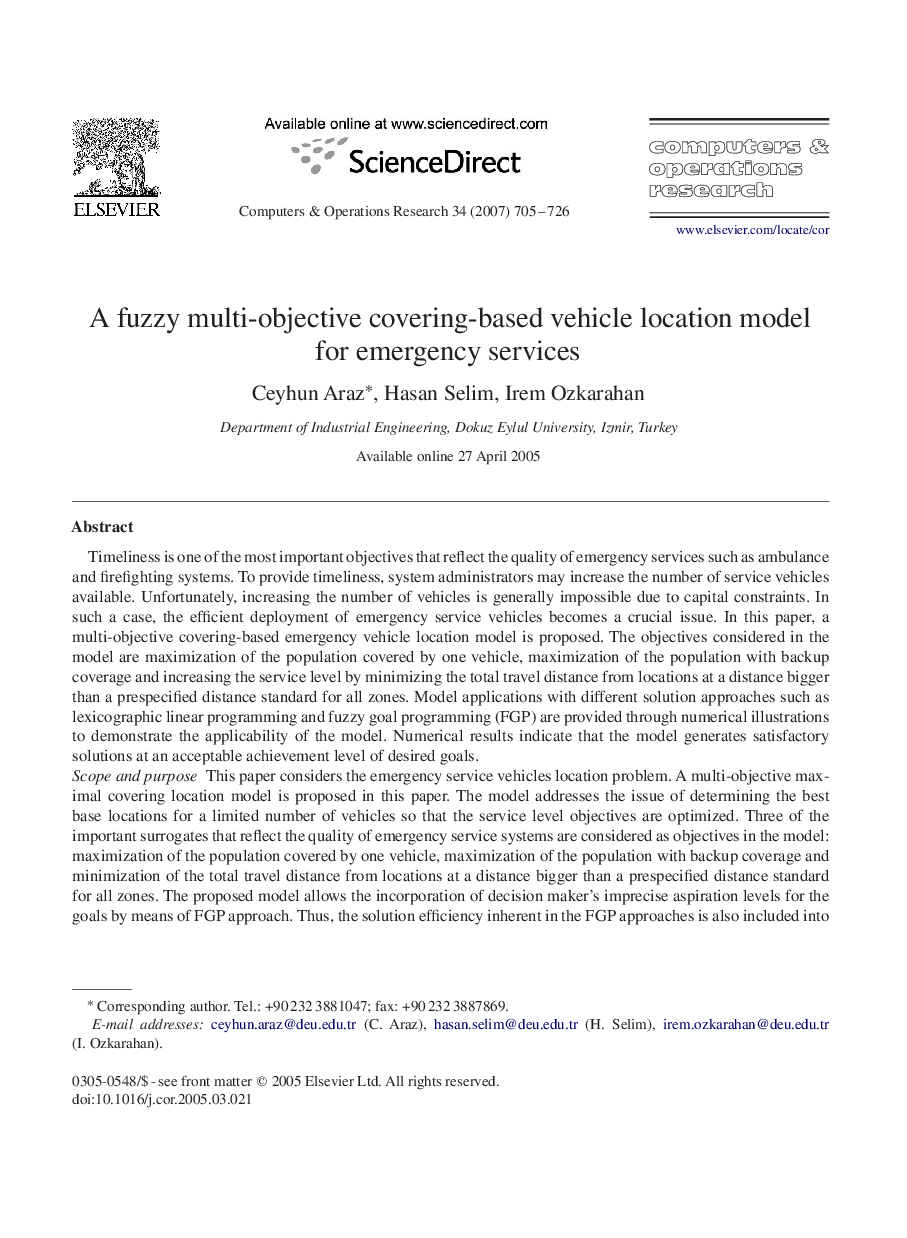| Article ID | Journal | Published Year | Pages | File Type |
|---|---|---|---|---|
| 474898 | Computers & Operations Research | 2007 | 22 Pages |
Timeliness is one of the most important objectives that reflect the quality of emergency services such as ambulance and firefighting systems. To provide timeliness, system administrators may increase the number of service vehicles available. Unfortunately, increasing the number of vehicles is generally impossible due to capital constraints. In such a case, the efficient deployment of emergency service vehicles becomes a crucial issue. In this paper, a multi-objective covering-based emergency vehicle location model is proposed. The objectives considered in the model are maximization of the population covered by one vehicle, maximization of the population with backup coverage and increasing the service level by minimizing the total travel distance from locations at a distance bigger than a prespecified distance standard for all zones. Model applications with different solution approaches such as lexicographic linear programming and fuzzy goal programming (FGP) are provided through numerical illustrations to demonstrate the applicability of the model. Numerical results indicate that the model generates satisfactory solutions at an acceptable achievement level of desired goals.Scope and purposeThis paper considers the emergency service vehicles location problem. A multi-objective maximal covering location model is proposed in this paper. The model addresses the issue of determining the best base locations for a limited number of vehicles so that the service level objectives are optimized. Three of the important surrogates that reflect the quality of emergency service systems are considered as objectives in the model: maximization of the population covered by one vehicle, maximization of the population with backup coverage and minimization of the total travel distance from locations at a distance bigger than a prespecified distance standard for all zones. The proposed model allows the incorporation of decision maker's imprecise aspiration levels for the goals by means of FGP approach. Thus, the solution efficiency inherent in the FGP approaches is also included into the model. To demonstrate the applicability of the model, numerical examples are provided using different solution approaches.
